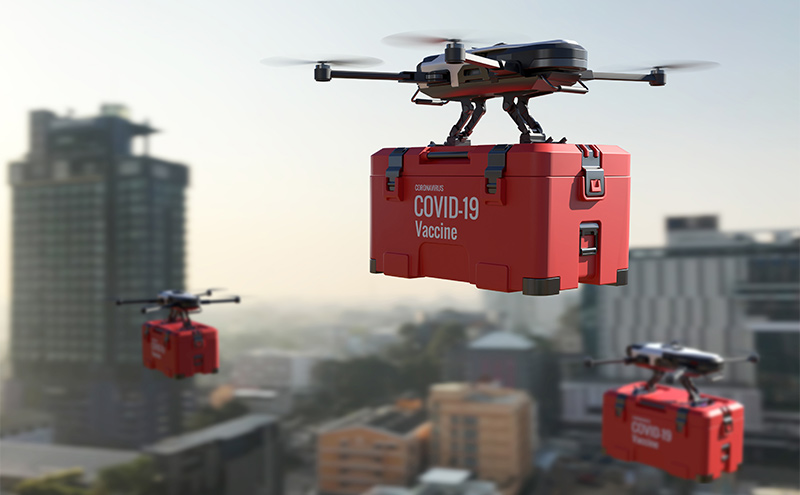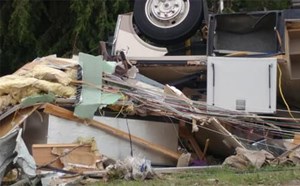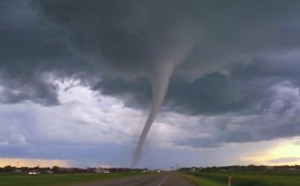
Use of Drones in Disaster Medicine
UAVs, unmanned aerial vehicles, otherwise known as drones, are routinely used in many filming situations such as capturing wedding moments, motion picture making, and recording sporting events. They are also being used increasingly for performing tasks that serve our communities including disaster-related operations. The technology integrated into these aerial devices has become more sophisticated allowing UAVs to meet many demands in the disaster setting. Elite drones equipped with special sensors and software have successfully been deployed for use in many disasters including Hurricanes Katrina, Harvey, and Irma, and The California Camp Fire. UAVs offer several benefits. Many hazards including flooding, downed powerlines, bridge collapse, and mudslides can prevent road travel and isolate people from the medical supplies they need. UAVs can deliver these supplies when ground travel is impossible. In addition, telemedicine applications are being developed that can connect patients with healthcare professionals. Telecommunication-supplemented UAVs also allow for communication between search and rescue (SAR) personnel and Incident Command. In addition, UAVs can often fly into areas deemed too dangerous for ground search personnel, surveying the area for signs of survivors. Some are even capable of using heat sensors to detect body heat emitted from living persons. UAVs can work cooperatively with traditional SAR teams providing overviews of territories that need to be searched. The additional information provided to ground SAR teams can be utilized to improve search strategies.
Drones have been also been used for evaluating the extent of damage incurred by the disaster event. They have been utilized for assessing the area involved and documenting the evolution of the affected area such as the spread of a fire, the rise or fall of flood waters, or the movement of mud slides. Images obtained can be used to quickly map large areas. The integrity of bridges, buildings, and other structures can be surveyed more safely and much faster than specialists can commute to the areas of devastation. UAVs have also been employed to monitor air quality and the presence of harmful gases or chemicals. This is particularly helpful during unintended release of substances into the atmosphere or in the event of a chemical, biological or explosive hazard. When cellular communications fail, UAVs can be employed as temporary aerial base stations to re-establish cellular connection.
While UAVs can cover large areas of terrain and limit risk exposure to emergency responders, there are some limitations. Improper or unsanctioned drone operation can disrupt rescue operations by flying in areas where manned aircraft being utilized. The potential for air collisions and accidents increase when UAVs fly in airspace where airlift maneuvers are in progress or where manned aircraft are taking off or flying. UAVs travel more slowly than traditional aircraft. Loads are generally limited with most commercial drones having a maximum load capacity of approximately 20 pounds. As with most mobile technology, battery life is limited. The running times are generally limited to 30 minutes or less before recharging or battery change is required. This can be decreased even further when operating with a payload or in windy conditions. Heavy wind gusts can affect UAV flying and control. Certain limitations may also occur with darkness and heavily wooded conditions.
Privacy and security are concerns with commercial drone use in disaster or medical response. Images obtained from drone footage have the potential to violate an individual’s privacy and if obtained by someone with ulterior motives could be used to commit a crime. It is also possible to hack into drone data and use the data to obtain what is intended to be secure information. The United States Department of Homeland security has also identified malicious use of drones to gain access to critical infrastructure information as a cybersecurity risk. It is important that these concerns be addressed by the responding agency. Consequently, responding agencies must develop protocols and record-keeping that keeps pace with this new technology.
The Federal Aviation Administration (FAA) requires drone registration for UAVs weighing over 0.55 lbs. This likely encompasses all commercial drones that would be utilized for disaster response. Also, responding agency should be aware of the qualifications of the drone operators they utilize for the disaster mission. Verification of regulation compliance and credentials can slow response times.
UAVs can augment disaster medical response efforts. Ensuring that drone operators can function in the disaster setting, understand Incident Command structure, and have a clear understanding of disaster search and response and their role within the response effort requires commitment on behalf of the responding agency. Continued technological advances will undoubtedly bring improvements to the capabilities of these unmanned aerial vehicles. They have earned their place in the modern disaster response armamentarium.
References:
- Reich, L (2016, January 26). How Drones are being used in Disaster Management.
- Hutson, M (2017, September 9). Hurricanes Show Why Drones are the Future of Disaster Relief. Learn More
- Willoughby, J (2019, March 22). Six Times Drones Have Helped with Disaster Response. Learn More
- Frank, M (2016, February 10). Drone Privacy: Is Anyone in Charge? Learn More
- Morrow, S (2019, April 23). Beware of the Drone! Privacy and Security Issues with Drones.
- Pesale, E (2017, May 12). How Drone and UAV Technology Will Exacerbate Data Privacy. Learn More
Lillian Lockwood, MD



